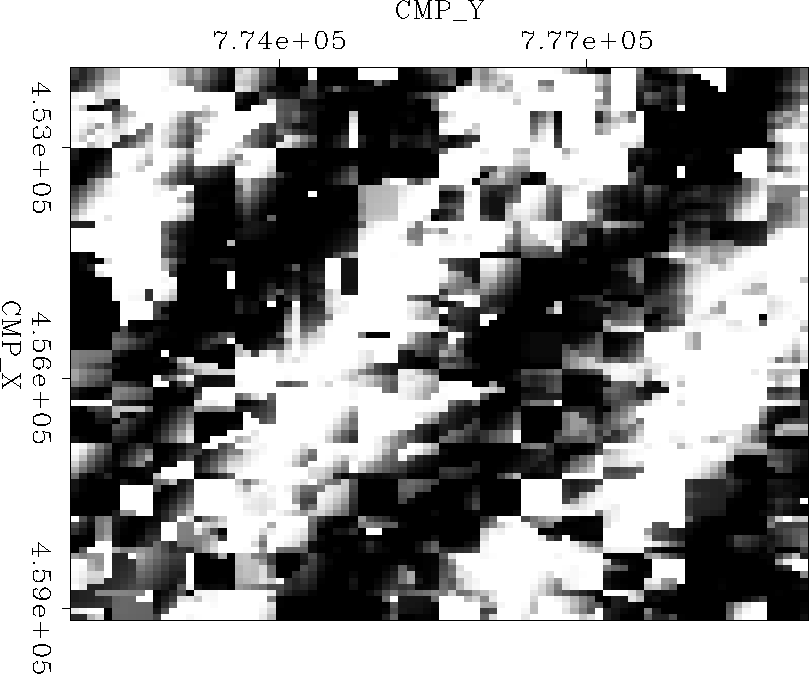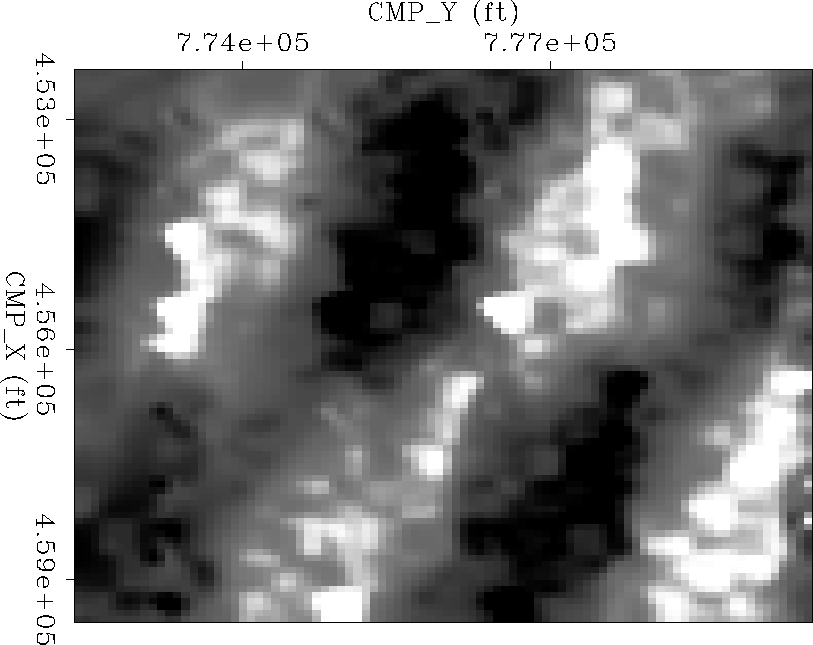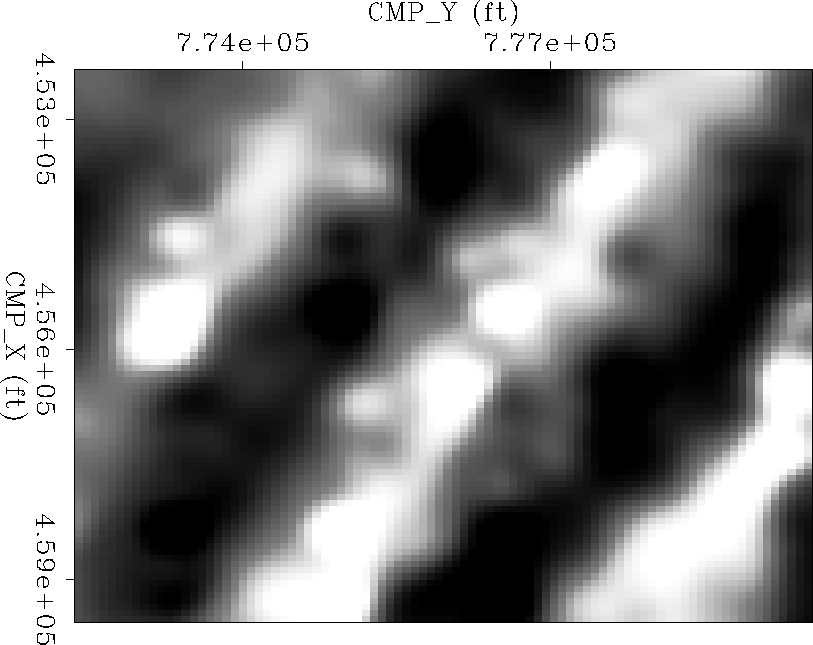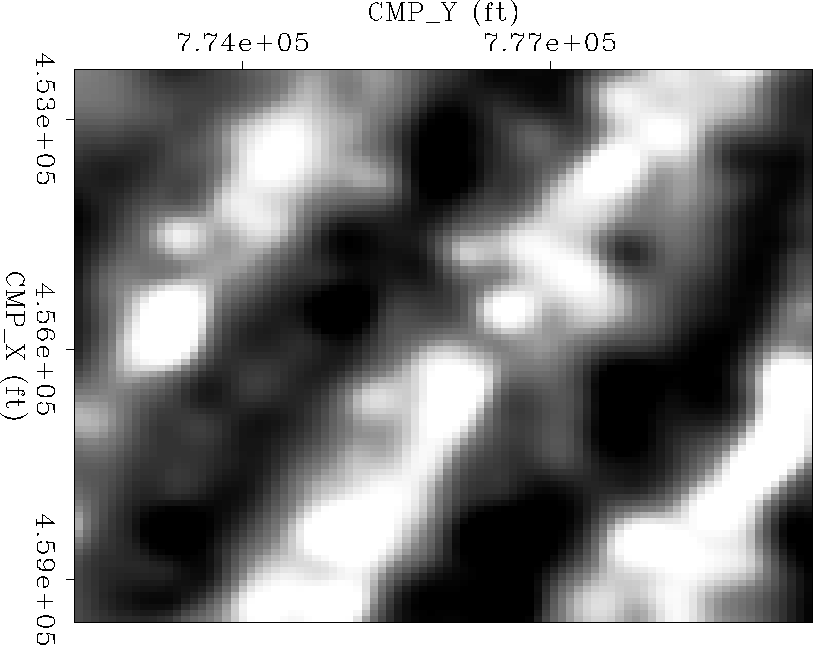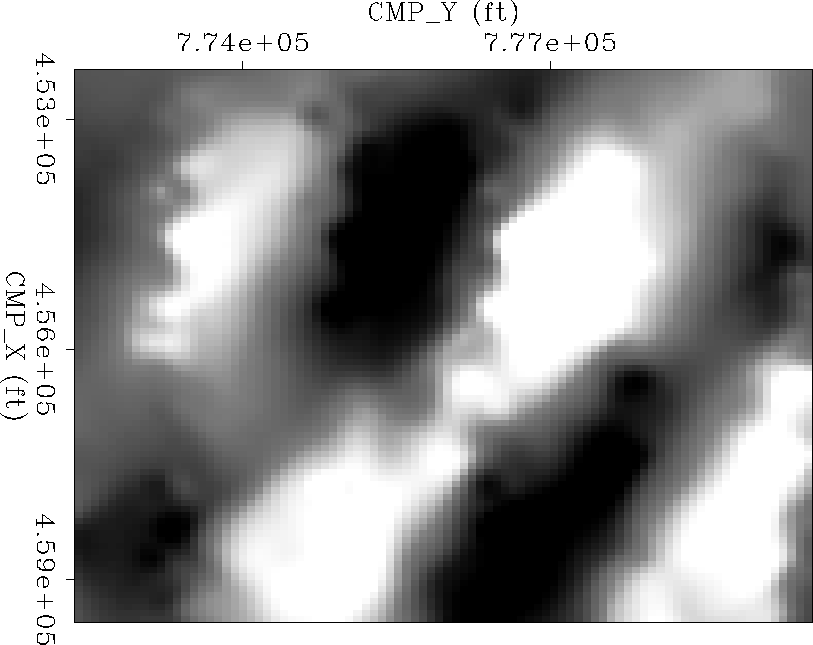




Next: Conclusions
Up: Chemingui & Biondi: Multichannel
Previous: Fold preconditioning
To illustrate the performance of the multichannel inversion technique,
we use the fold distribution shown in Figure fold. The fold chart
represents a subset from a real wide-azimuth
land 3D survey. We extracted the header values of 21,400
traces whose source-receiver
azimuth is between -30o and 30o with an absolute-offset range from
9000 to 11000 ft. The reflectivity model consists of a single
dipping bed whith a strike of 60o from the inline direction.
We use a monochromatic planewave to create the synthetic input data
and process a single frequency slice. All the results are displayed
in the Fourier domain of the log-stretched data.
We analyze the effects of fold variations on the imaginary part of
the wavefield.
The model is a common-offset section of
100 by 100 CMP's with 80-foot spacing. Figure model shows the
ideal result from a synthetic experiment which simulates zero-azimuth
acquisition and a constant offset of 10,000 ft. This is the
unknown model that solves the set of equations in equ1.
Figure norm-stack is the output of normal moveout and stacking
of the irregular subset after fold normalization.
We plot the imaginary part of the output normalized by the
amplitude of the complex wavefield. This describes the phase of the
dipping reflector after NMO. The phase map is shifted
compared to the ideal model since the NMO action does not account
for the dip of the reflector. In addition, there are
phase and amplitude distortions between the CMP bins due to
incoherent partial stacking of the traces within local bins.
Figures amo and norm-amo are the output of AMO
processing (inverse of modeling). These
are the results of applying the adjoint operator, AMO, to reconstruct the data
with zero common-azimuth and 10,000-ft effective offset.
As result of the coherent partial stacking of the dipping bed, the
phase of the output is now reconstructed correctly.
The output of the normalized AMO is rougher but displays better resolution than
the unnormalized result. Both results do not show a good quality, they
were generated using the inversion
algorithm (one iteration), which is still in the
development stage.
No special care was taken for the amplitude weights and the tapering of
the operator. In addition, the algorithm doesn't
account for the effects of operator aliasing since the goal of the inversion
is the dealiasing of the data.
The results of the dealiasing inversion,
after 5 conjugate gradient iterations, are shown in Figures (6-8).
The results of the model-space inversion are significantly better
than the data-space inverse solution. Comparing Figures mod-inv
and prec-mod, the fold preconditioning has slightly improved
the inversion (sped the convergence). The fold normalization
seems to be most effective at the very first few iterations, then, the two
solutions converge at comparable rates.
Overall, the model-space dealiasing inversion with fold preconditioning
yielded better results than
conventional processing. It also provided better results
than the data-space inversion and is computationally less expensive.
fold
Figure 1 Fold distribution of the input data.




 model
model
Figure 2 Synthetic reflectivity model with ideal zero azimuth-constant offset recording geometry.




 norm-stack
norm-stack
Figure 3 Fold normalized NMO-stack.




 amo
amo
Figure 4 Unnormalized AMO stack.




 norm-amo
norm-amo
Figure 5 Normalized AMO stack.




 mod-inv
mod-inv
Figure 6 Output of model-space inversion after 5 iterations.




 prec-mod
prec-mod
Figure 7 Model-space inverse solution with fold preconditioning, after 5 iterations.




 data-inv
data-inv
Figure 8 Data-space inverse solution after 5 iterations.










Next: Conclusions
Up: Chemingui & Biondi: Multichannel
Previous: Fold preconditioning
Stanford Exploration Project
10/9/1997



